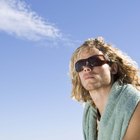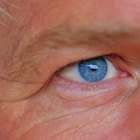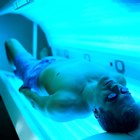Polarized sunglasses prevent the sun’s rays from damaging essential parts of the eye, like the cornea and lense. They work in the same way as photochromic lenses by safeguarding the eyes from glare and extreme exposure to light. Polarized eyewear is coated with a unique material varying level of effect.
Action and Use
When light hits flat surfaces (water, clouds or pavement), light waves rebound and hit the eyes as multidirectional beams, which can cause unwanted eyestrain. Giving off a significantly higher degree of brightness than surrounding light, these reflected rays compel the eyes to do more focusing. Most polarized glasses deflect these rays and lessen eyestrain. Golfers, boaters, joggers and cyclists often need polarized sunglasses to avoid extensive eyestrain while under the sun.
Lightly Polarized Lenses
Almost any lens type can be coated with polarizing material. The first type offers the lightest polarization available and usually comes in gray or brown tints. Restrictions apply to other colors, as they are not readily applicable with this polarization level. Lightly polarized lenses are advisable for people who spend a lot of time working in areas where the sun’s ray goes through large windows or when working in areas where you need to go outside for some time, like cafeterias having outside tables.
Medium Polarized Lenses
Mirrored prescription eyewear is among the most common examples using medium polarized lenses. Optimally used in low-light conditions, it’s constructed with a blue-, ruby- or green-tinted mirror over gray, red or green shade of polarized lenses. Prescription sunglasses of this polarization grade improve visual sensitivity in fog or haze, especially when snow skiing, flying or driving.
Heavily Polarized Lenses
This type of polarization has the greatest glare protection level among all three. Intended for heavy outdoor use, it offers glare protection during boating, fishing, running, jogging, cycling and golfing. Wearing heavily polarized eyewear improves the user’s visual acuity and reduces glare that bounces off from flat surfaces normally encountered in such activities. This level also provides sufficient protection for people who have undergone eye surgery or those with extreme photosensitivity.
Related Articles

Amber Vs. Grey Sunglasses

The Effects of Red Lens Sunglasses

The Best Sunglasses for Kayaking

How Do Yellow Lenses in Ski Goggles ...

Polycarbonate Lenses Vs. Polarized

Health Risks of Marble Dust

The Benefits of Yellow Lenses in ...

Tanning Beds and Eye Disorders

Do People With Blue Eyes Need to Wear ...

The Best Photochromic Sunglasses

Phototherapy Vs. Tanning Bed

How to Spot Fake Serengeti Sunglasses

Rimless vs. Full Rim Glasses

How Does Ultraviolet Light Affect ...

How Do Tanning Beds Affect Eyes?

How Does a Tanning Bed Work?

Sunburn & Chlorine Pool Swimming

How to Get a Good Tan From a Sun Lamp

Tilapia on a Foreman Grill

How to Clean Maui Jim Sunglasses
References
Writer Bio
Natalie Andrews has been writing since 2003. She has created content for print newsletters and blogs in the flower, transportation and entertainment industries. Her expertise lies in travel and home-decorating. Andrews graduated with a bachelor's degree in communications from the University of Houston in 2008.